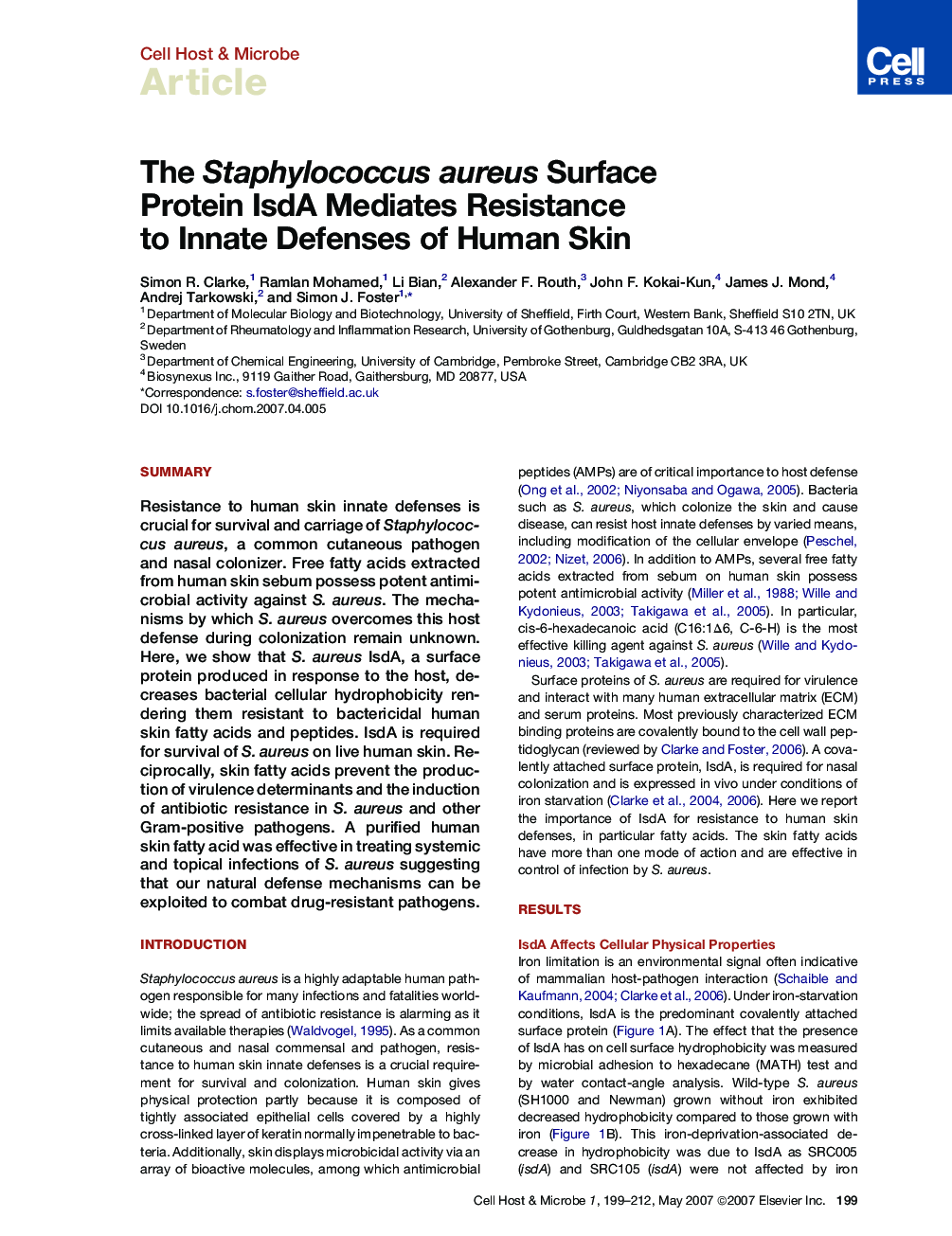| Article ID | Journal | Published Year | Pages | File Type |
|---|---|---|---|---|
| 4361856 | Cell Host & Microbe | 2007 | 14 Pages |
SummaryResistance to human skin innate defenses is crucial for survival and carriage of Staphylococcus aureus, a common cutaneous pathogen and nasal colonizer. Free fatty acids extracted from human skin sebum possess potent antimicrobial activity against S. aureus. The mechanisms by which S. aureus overcomes this host defense during colonization remain unknown. Here, we show that S. aureus IsdA, a surface protein produced in response to the host, decreases bacterial cellular hydrophobicity rendering them resistant to bactericidal human skin fatty acids and peptides. IsdA is required for survival of S. aureus on live human skin. Reciprocally, skin fatty acids prevent the production of virulence determinants and the induction of antibiotic resistance in S. aureus and other Gram-positive pathogens. A purified human skin fatty acid was effective in treating systemic and topical infections of S. aureus suggesting that our natural defense mechanisms can be exploited to combat drug-resistant pathogens.
